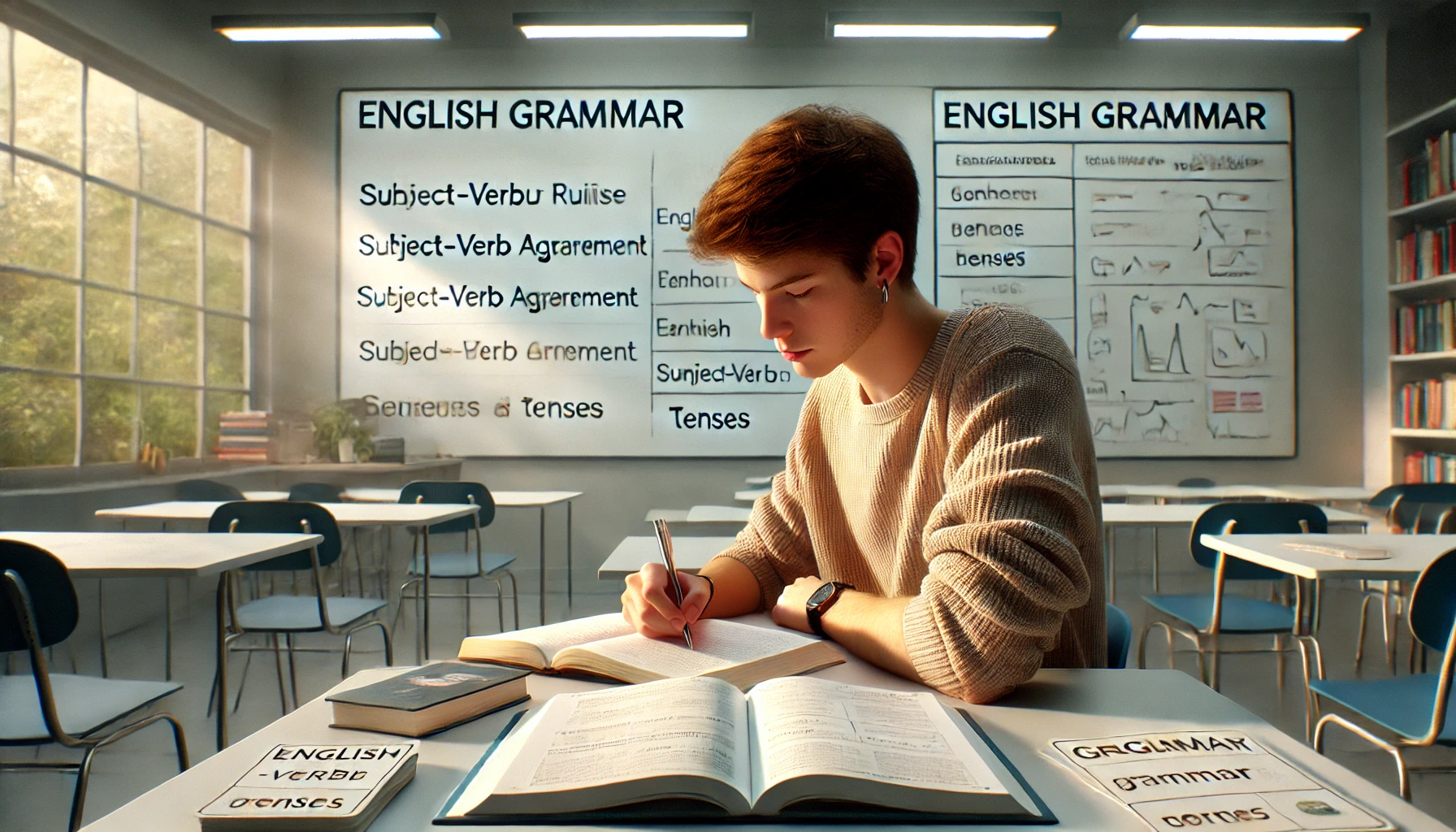Table of Contents
- 1. Introduction to the Simple Past Tense
- 2. What Is the Simple Past Tense?
- 3. Sentence Structure in Simple Past Tense
- 4. Regular Verbs in Simple Past
- 5. Irregular Verbs in Simple Past
- 6. Common Uses of Simple Past Tense
- 7. Forming Negatives and Questions
- 8. Common Errors and How to Avoid Them
- 9. Practice Exercises
- 10. Conclusion
1. Introduction to the Simple Past Tense
The simple past tense is one of the most essential building blocks in English grammar. Used to describe completed actions, it is critical for communicating effectively about events that occurred in the past. Whether you’re sharing a story, discussing history, or recounting personal experiences, the simple past tense helps convey your message clearly.
This guide dives deep into the rules, structure, and practical applications of the simple past tense. By the end, you’ll have a solid understanding of how to use it confidently in both writing and speech.
2. What Is the Simple Past Tense?
The simple past tense describes actions or situations that started and finished in the past. It is typically used to refer to events that are no longer happening or conditions that existed at a previous time. For example:
- “She walked to the store yesterday.”
- “They enjoyed the movie last night.”
The simple past tense does not require auxiliary verbs for affirmative sentences, unlike some other tenses.
3. Sentence Structure in Simple Past Tense
To form sentences in the simple past tense, use the following structure:
- Affirmative: Subject + past tense verb
- Negative: Subject + did not + base verb
- Question: Did + subject + base verb?
Examples:
- Affirmative: “He finished his homework.”
- Negative: “He did not finish his homework.”
- Question: “Did he finish his homework?”
4. Regular Verbs in Simple Past
For regular verbs, the past tense is formed by adding -ed to the base form:
- “Talk” → “Talked“
- “Clean” → “Cleaned“
- “Play” → “Played“
Pay attention to spelling rules:
- If the verb ends in e, add only -d (e.g., “love” → “loved”).
- If the verb ends in a consonant + y, change y to i and add -ed (e.g., “study” → “studied”).
- For one-syllable verbs ending in a vowel + consonant, double the final consonant before adding -ed (e.g., “stop” → “stopped”).
Spelling rules are crucial for forming the past tense of regular verbs correctly. Let’s explore a few more examples:
- For verbs ending in -e, simply add -d: “agree” → “agreed,” “arrive” → “arrived.”
- For verbs ending in a single vowel followed by a consonant, double the final consonant before adding -ed: “plan” → “planned,” “admit” → “admitted.”
- When a verb ends in -y preceded by a consonant, change the -y to -i and add -ed: “try” → “tried,” “cry” → “cried.”
By keeping these rules in mind, you can minimize errors and ensure grammatical accuracy in your writing and speech.
5. Irregular Verbs in Simple Past
Unlike regular verbs, irregular verbs do not follow a fixed pattern for forming the past tense. Each verb has its unique past tense form. For example:
- “Go” → “went”
- “Eat” → “ate”
- “Buy” → “bought”
There is no universal rule for irregular verbs, so they must be memorized. A comprehensive list of irregular verbs can significantly aid in mastering their usage.
6. Common Uses of Simple Past Tense
The simple past tense serves multiple purposes in English communication. Here are its primary uses:
- Describing completed actions: “She finished her project.”
- Indicating past habits: “We went to the park every Saturday.”
- Referring to historical events: “The Wright brothers invented the first airplane.”
This versatility makes the simple past tense indispensable for discussing past occurrences and expressing ideas clearly.
7. Forming Negatives and Questions
Forming negatives and questions in the simple past tense involves using the auxiliary verb did:
- Negative: “She did not (didn’t) attend the meeting.”
- Question: “Did she attend the meeting?”
Note that the main verb remains in its base form when paired with did.
8. Common Errors and How to Avoid Them
Errors in using the simple past tense often arise from confusion between regular and irregular verbs or misuse of auxiliary verbs. Here are some examples and corrections:
- Incorrect: “He didn’t went to the party.”
- Correct: “He didn’t go to the party.”
- Incorrect: “They eated lunch early.”
- Correct: “They ate lunch early.”
By understanding the rules and practicing consistently, you can avoid these common pitfalls.
9. Practice Exercises
Here are some exercises to reinforce your understanding of the simple past tense:
- Convert the following sentences into the simple past tense:
- “I walk to school every day.”
- “They eat lunch at noon.”
- Form negatives and questions for the following sentences:
- “She visited her grandparents.”
- “He played soccer in the evening.”
10. Conclusion
The simple past tense is a foundational aspect of English grammar, enabling you to describe past events, habits, and experiences effectively. By understanding its rules and practicing regularly, you can enhance your fluency and communication skills. Start by mastering the basics, then gradually challenge yourself with more complex sentence structures.
Continue exploring other tenses to expand your knowledge and become a more confident English speaker.




